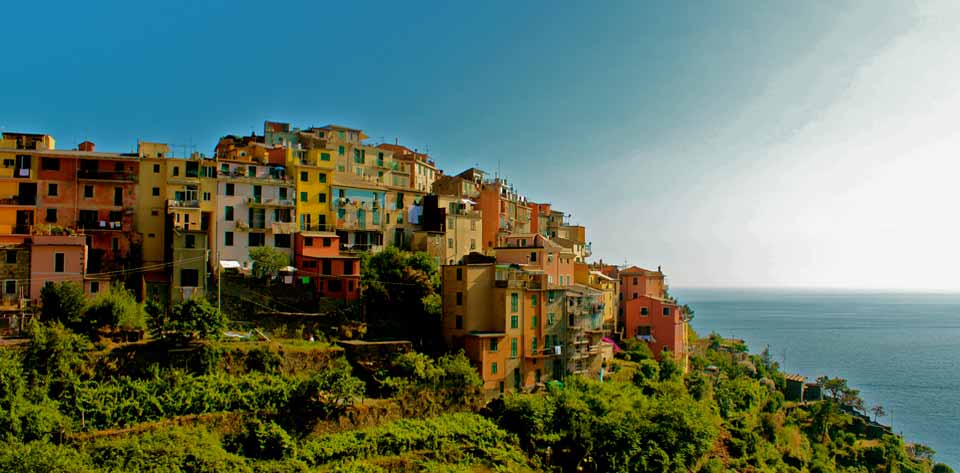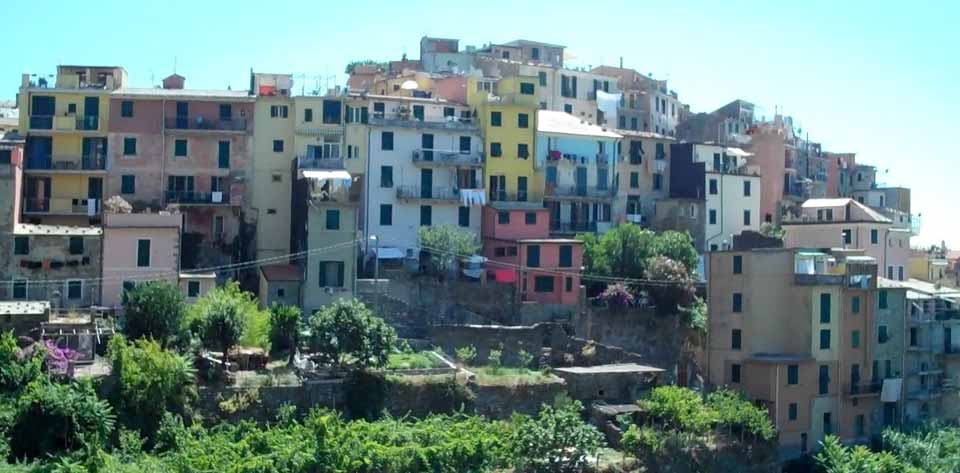CORNIGLIA |
Corniglia
Placed on a steep promontory, with two exclusive small beaches at its sides, Corniglia can be reached from the railway through a long flight of steps leading to the village (an elevator is being built).
This village stands sharply out from the others in Cinque Terre. As a matter of fact it has a marked agricultural vocation and is classified as a rural village instead of a maritime one. It is situated on a hundred-metre high promontory sheer above the sea, and it is surrounded on the three internal sides by terraced vineyards. Once the sea could only be reached by a long stair made of 370 steps, Lardarina staircase, now it can be reached also by a road passing near the railway, which runs a little above the the Guvano nudist Beach.
The exterior structure of houses recalls the rural areas of the inland: they are usually one story high and only recently have had upper stories added. The village has been known since the 13th century, but it has ancient Roman origins. The name probably comes from an old farm where the white wine, already renowned, was produced. We suggest a visit to the Church of San Pietro (1334), which is considered one of the most significant monuments in the gothic-ligurian style of the Cinque Terre and a view the Belvedere, an enchanting terrace on the seaside.
This village stands sharply out from the others in Cinque Terre. As a matter of fact it has a marked agricultural vocation and is classified as a rural village instead of a maritime one. It is situated on a hundred-metre high promontory sheer above the sea, and it is surrounded on the three internal sides by terraced vineyards. Once the sea could only be reached by a long stair made of 370 steps, Lardarina staircase, now it can be reached also by a road passing near the railway, which runs a little above the the Guvano nudist Beach.
The exterior structure of houses recalls the rural areas of the inland: they are usually one story high and only recently have had upper stories added. The village has been known since the 13th century, but it has ancient Roman origins. The name probably comes from an old farm where the white wine, already renowned, was produced. We suggest a visit to the Church of San Pietro (1334), which is considered one of the most significant monuments in the gothic-ligurian style of the Cinque Terre and a view the Belvedere, an enchanting terrace on the seaside.



